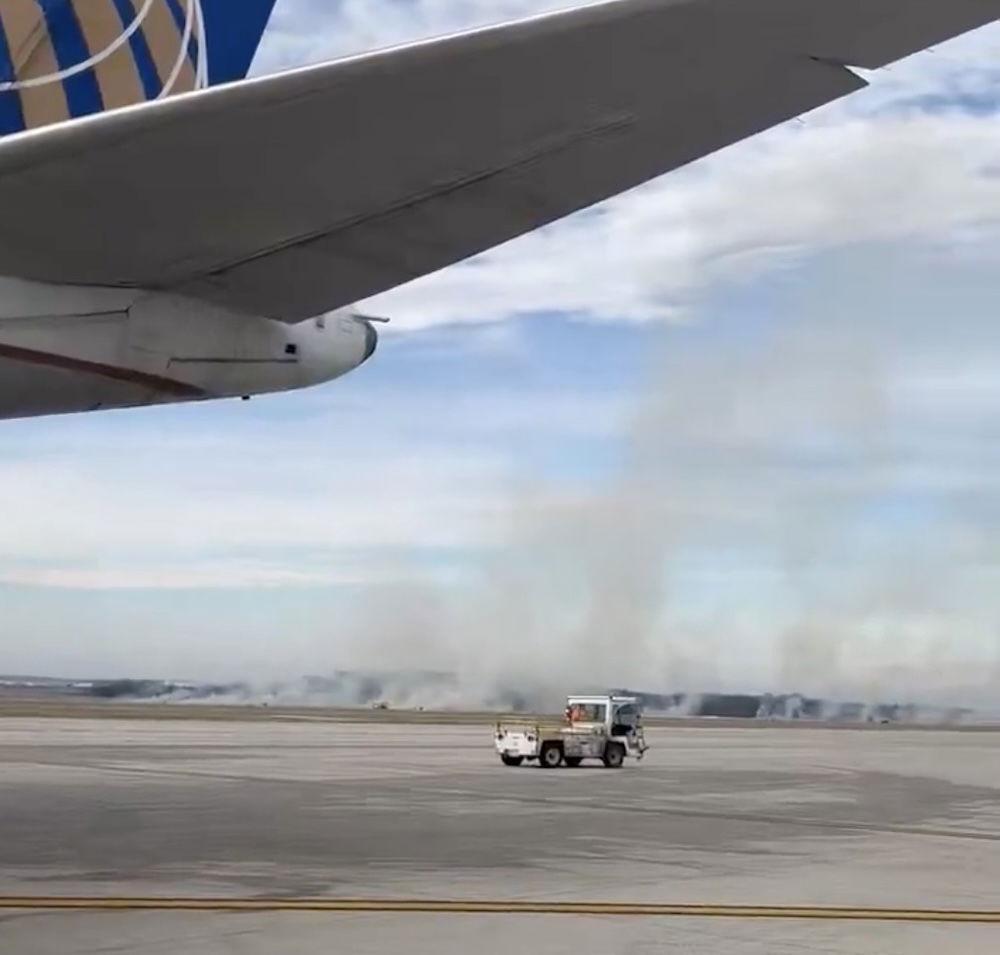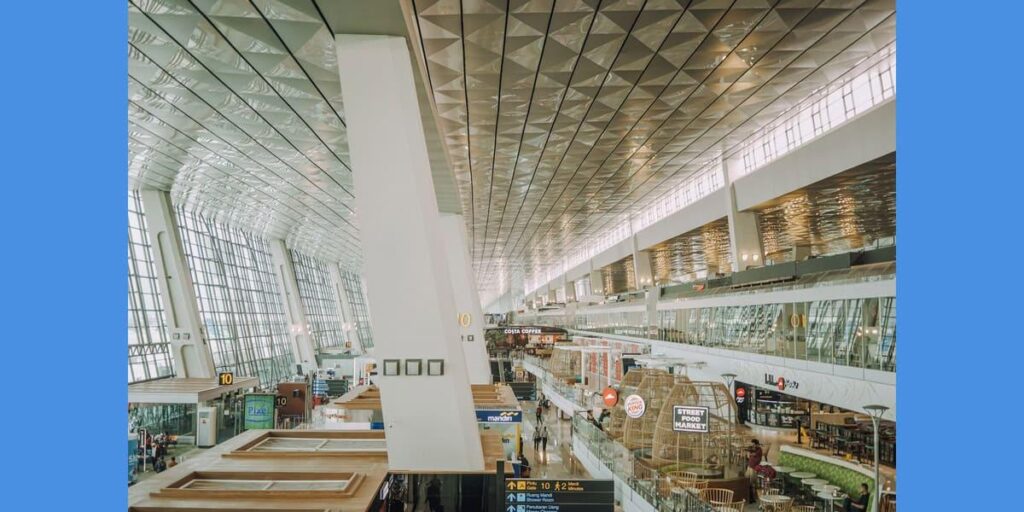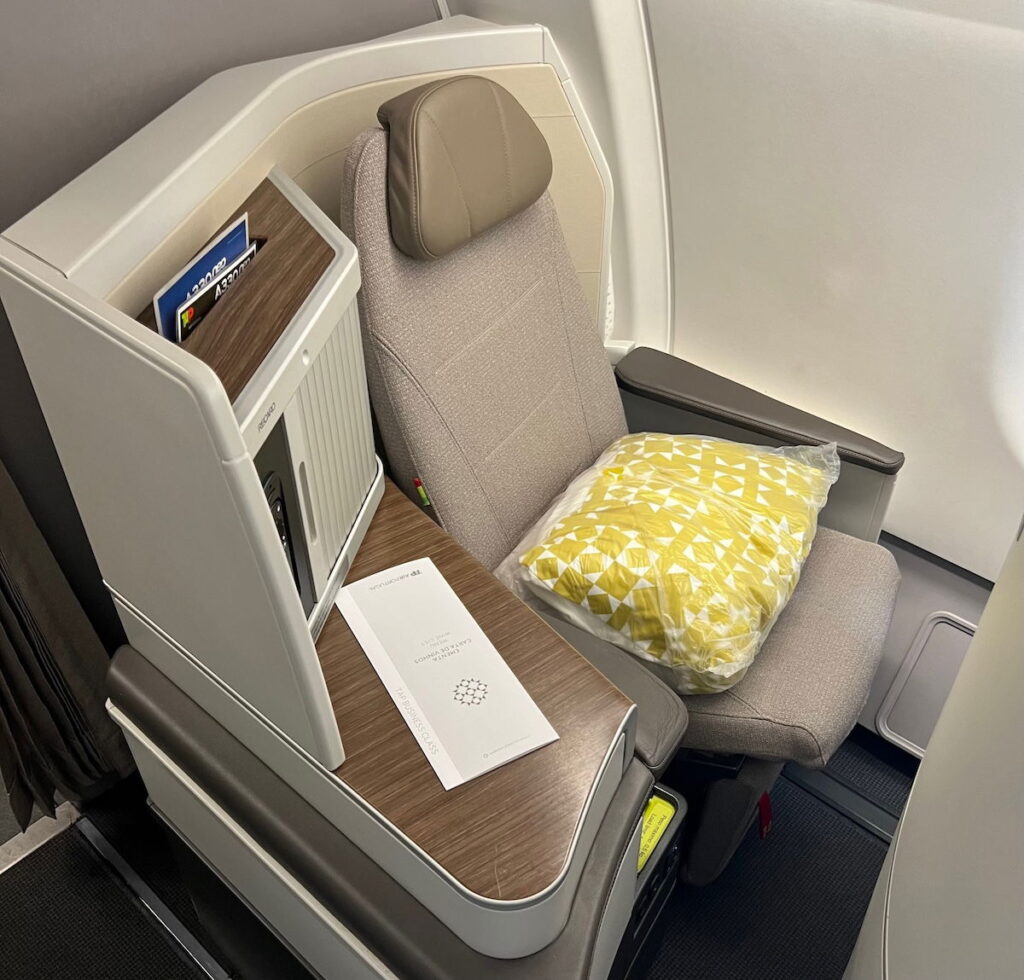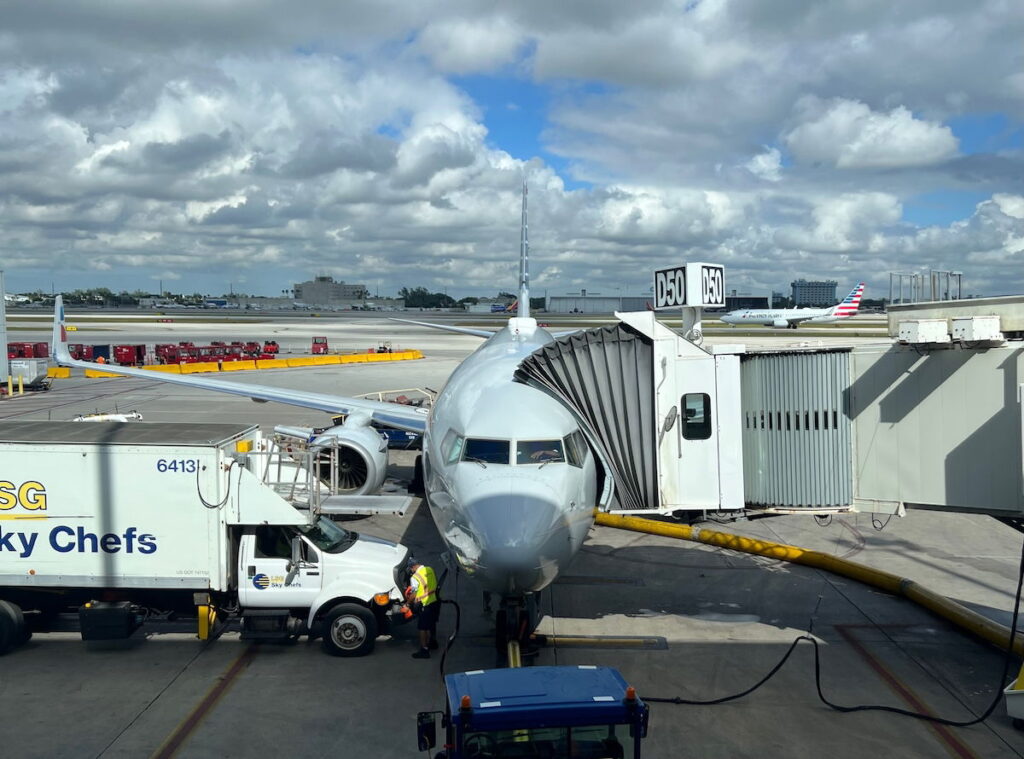Flying Into the New Year: Travel Resolutions for Frequent Flyers in 2025
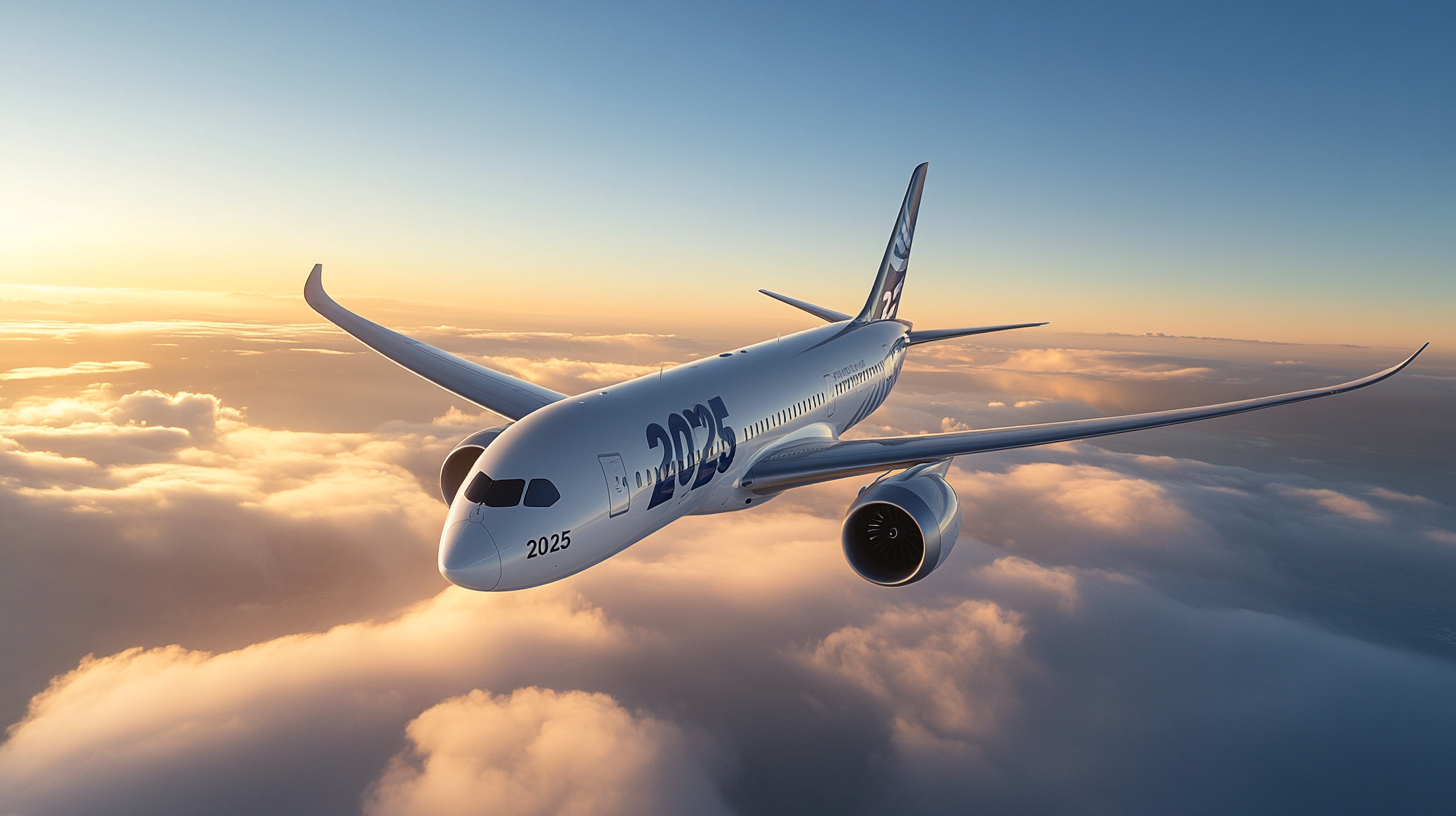
The dawn of 2025 brings a fresh horizon for avid travelers and frequent flyers. With the aviation industry undergoing transformative changes, from cutting-edge technological advancements to revamped loyalty programs, there’s no better time to reassess your travel strategies and resolutions.
Staying informed and adaptable is key to maximizing your travel experiences this year. This comprehensive guide will help you navigate the complex landscape of modern air travel, ensuring you make the most of every mile and moment.
1. Navigate Airline Loyalty Program Changes Wisely
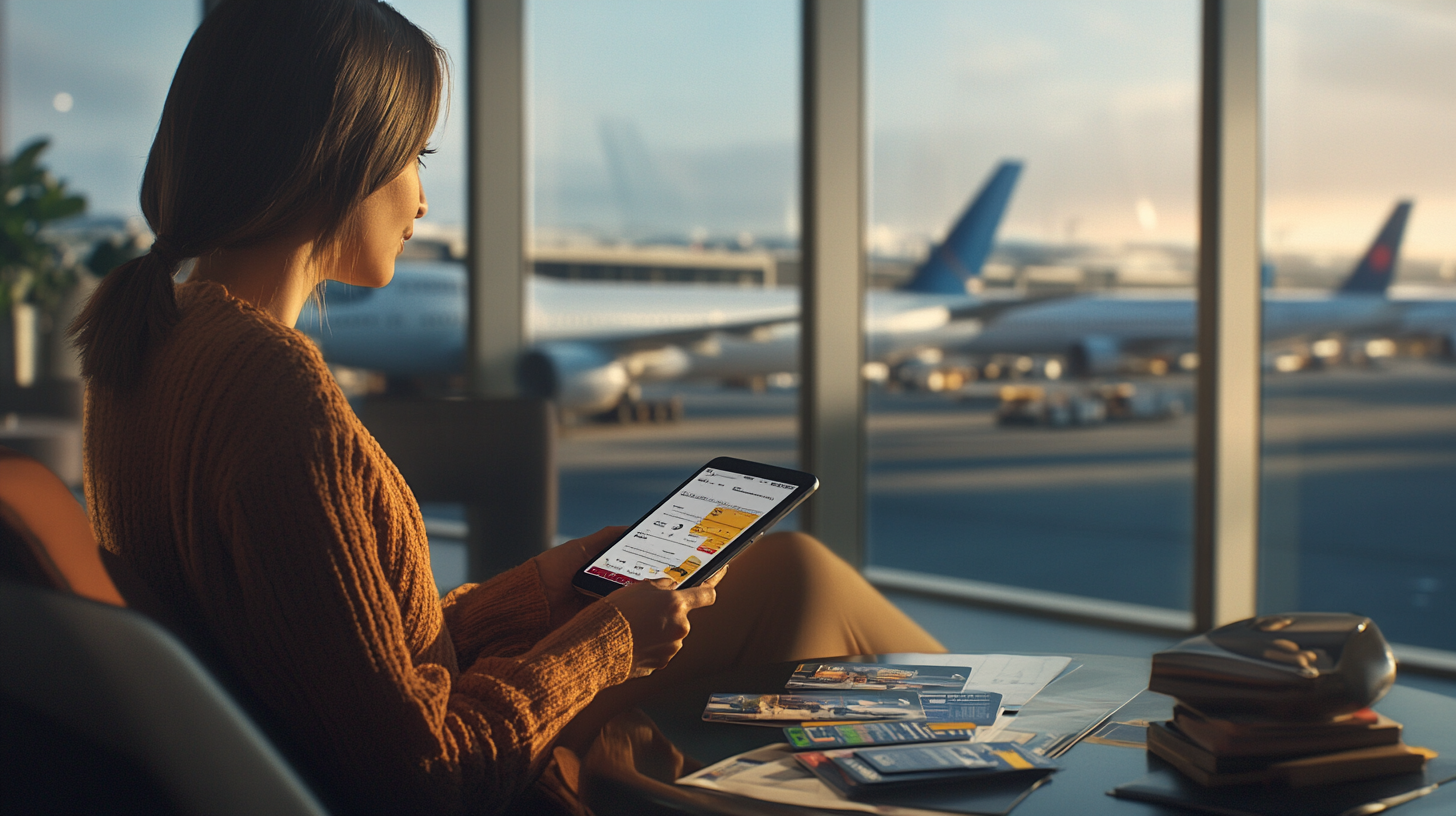
The landscape of airline loyalty programs is shifting dramatically in 2025. Notably, Alaska Airlines has announced significant enhancements to its Mileage Plan. Starting January 1, travelers can earn elite qualifying miles (EQMs) on award flights with Alaska, Hawaiian Airlines, and partners based on the distance flown.
This means that even when you redeem miles for free flights, you’ll still be progressing toward elite status—a rare advantage in the frequent flyer world. Moreover, new multi-carrier awards will be available for trips between the U.S. and Europe, providing increased flexibility and value.
If you’re an Alaska Visa cardholder, you’ll now have the opportunity to earn EQMs through your spending, effectively turning every purchase into a step toward elite benefits like priority boarding and complimentary upgrades. This change underscores the importance of aligning your credit card strategy with your travel goals.
On the flip side, United Airlines is revamping its Premier status program, making it more challenging to attain elite status. The qualifying thresholds have been raised, requiring more Premier Qualifying Flights (PQFs) and Points (PQPs). For example, to reach Premier 1K status, travelers might need to spend up to $28,000 in PQPs.
However, United is offering enhanced PlusPoints usability and new options like PQP deposits and TravelBank cash to offset these challenges. Strategic use of United credit cards can also help you earn PQPs more efficiently, as they offer bonus earning rates on airline purchases and other spending categories.
As these changes unfold, it’s crucial to re-evaluate which loyalty programs align best with your travel patterns. Consider consolidating your miles into the program that offers the most benefits for your needs. Travel expert Brian Kelly of The Points Guy emphasizes the importance of strategically handling points and miles amidst these program overhauls. Here are some Expert Tips for Maximizing Airline Loyalty Programs in 2025.
Furthermore, with Alaska Airlines and Hawaiian Airlines merging their frequent flyer programs into a unified system, members can transfer miles between accounts at a 1:1 ratio, book flights on both airlines, and enjoy matched elite status. This merger aims to provide greater flexibility and value for travelers, with more details expected by mid-2025. Staying informed about these developments can help you take advantage of new opportunities as they arise. Learn more about How the Alaska and Hawaiian Airlines Merger Affects Frequent Flyers.
2. Adapt to Airline Service Enhancements and Changes

Airlines are set to introduce significant service changes in 2025, impacting the way you travel. Delta Air Lines is refreshing its cabin interiors, promising a more comfortable and modern flying experience. This revamp includes enhanced seating designs with improved ergonomics, larger in-flight entertainment screens, and upgraded meal options that cater to diverse dietary preferences.
The introduction of high-speed Wi-Fi across their fleet ensures you stay connected throughout your journey. Meanwhile, JetBlue is launching its first airport lounges in New York and Boston. These lounges, known as the JetBlue Sky Clubs, will be accessible to certain cardholders and loyalty members, elevating the pre-flight experience with exclusive amenities such as gourmet dining options, quiet workspaces, and spa services.
If you’re a JetBlue frequent flyer, this is a perk worth exploring, especially if you often have long layovers or prefer arriving at the airport early. Check out this Guide to JetBlue’s New Airport Lounges and Amenities.
Budget travelers should note that Frontier Airlines plans to introduce first-class-style seating across all its flights. This move aims to offer a premium experience at an affordable price point, bridging the gap between low-cost travel and comfort. These new seats will feature extra legroom, recline options, and enhanced personal space. Frontier’s innovative approach could redefine expectations for budget airlines in the coming years. Read more about Frontier Airlines’ Affordable First-Class Seating Explained.
However, not all changes are positive. Air Canada will start charging extra for carry-on bags and seat changes for basic economy travelers, which could significantly increase your travel costs if you’re not careful. Additionally, Spirit Airlines has filed for bankruptcy, potentially leading to schedule changes and reduced operations in 2025. If you have upcoming flights with Spirit, it’s advisable to stay updated on their restructuring process to avoid disruptions. Learn more about What Spirit Airlines’ Bankruptcy Means for Travelers in 2025.
Being proactive about understanding these service changes enables you to make informed decisions when booking flights. It’s essential to read the fine print and be aware of any additional fees or policy adjustments that could impact your travel budget.
3. Embrace Sustainable and Authentic Travel Experiences
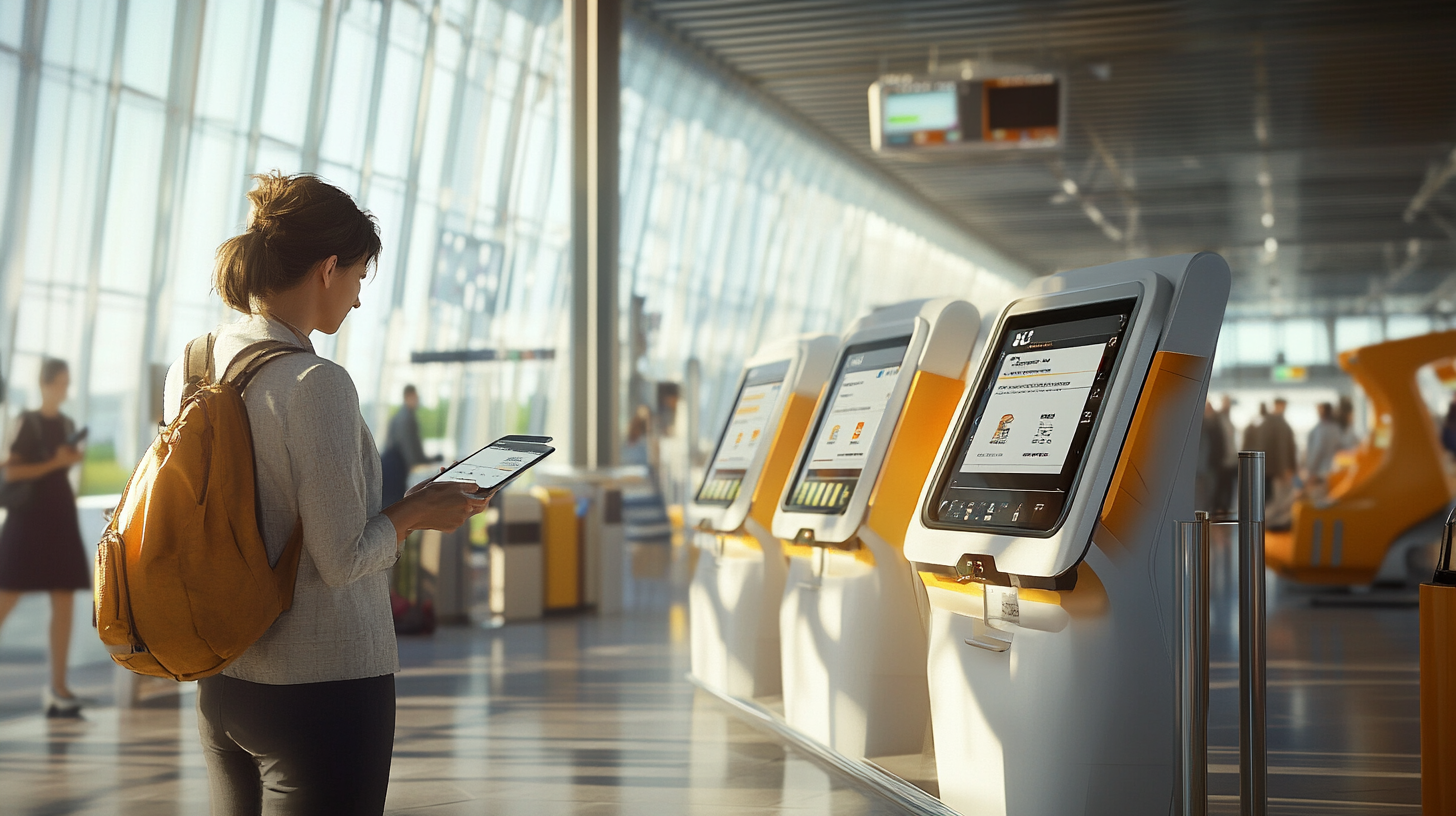
In 2025, travelers are prioritizing authentic experiences, culture, and novelty, often choosing longer trips to immerse themselves fully. With increasing travel costs fueled by inflation and sector-specific price hikes, making your journeys meaningful is more important than ever.
Younger generations, influenced by social media and a growing awareness of global issues, show a strong inclination towards international travel, seeking to explore new destinations and cultures deeply. Consider embracing sustainable and slow travel practices. This approach not only reduces your carbon footprint but also allows you to genuinely connect with local communities and environments.
For instance, exploring the breathtaking landscapes of Patagonia in Chile and Argentina offers an opportunity to experience nature’s grandeur while supporting eco-friendly tourism initiatives. Trekking the Torres del Paine or visiting the Perito Moreno Glacier are experiences that stay with you for a lifetime. Check out this Sustainable Travel Guide to Exploring Patagonia.
Destinations like AlUla in Saudi Arabia and Thailand’s InterContinental Khao Yai are perfect examples of places where luxury meets sustainability. AlUla boasts ancient sites like Hegra, a UNESCO World Heritage Site, complemented by modern, eco-conscious accommodations such as the Banyan Tree resort. Visitors can marvel at the rock-carved tombs and engage in cultural experiences that support local communities. Here’s more information on Experiencing the Heritage and Luxury of AlUla, Saudi Arabia.
In Thailand, the InterContinental Khao Yai offers immersive experiences amidst lush national parks and wildlife sanctuaries. Guests can partake in guided nature walks, learn about conservation efforts, and enjoy locally sourced cuisine, all while staying in a luxurious setting that prioritizes environmental responsibility. Read more about Eco-Friendly Luxury at InterContinental Khao Yai, Thailand.
As you plan these adventures, tools like American Express Plan It® can help you manage your travel expenses effectively. By breaking up large purchases into manageable monthly payments with a fixed fee, you can enjoy these enriching experiences without financial stress, earning reward points for future travels in the process. This financial flexibility allows you to invest in meaningful travel experiences that contribute to personal growth and global understanding. Learn more about Using American Express Plan It® for Travel Budgeting.
4. Leverage Credit Card Rewards and Elite Status Opportunities

Optimizing your credit card strategy is essential to maximize rewards and earn elite status efficiently. With airlines making it harder to achieve elite status through traditional means, credit cards play a pivotal role in bridging the gap.
For example, United Airlines’ credit cards offer accelerated paths to earning PQPs, which can significantly improve your chances of attaining or maintaining elite status. The United Explorer Card, for instance, offers bonus PQPs after reaching certain spending thresholds, along with perks like free checked bags and priority boarding. Read more about Maximizing United Airlines Credit Card Benefits for Elite Status.
If you’re an Alaska Visa cardholder, the new Mileage Plan enhancements mean your spending can now contribute directly to earning EQMs. This change effectively turns your everyday purchases into stepping stones toward elite benefits. By strategically using your card for everyday expenses, from groceries to utility bills, you can steadily progress toward higher status tiers without necessarily increasing your flying frequency. Find out How to Earn Elite Qualifying Miles with the Alaska Visa Card.
Don’t overlook the value of consolidating your miles and points. By focusing your efforts on one or two loyalty programs that align with your travel habits, you can accumulate rewards faster and unlock higher-tier benefits. Experts from Upgraded Points suggest making this a key part of your travel resolutions for 2025, ensuring you get the most out of your spending and flying activities. This may involve shifting your everyday spending to a card that aligns with your preferred airline or hotel chain. Here are some additional Strategies for Consolidating Miles and Maximizing Rewards.
Additionally, keep an eye on airline partnerships. Earning miles through partner airlines can be a strategic way to boost your balance. With the upcoming merger between Alaska Airlines and Hawaiian Airlines, and the ongoing integration of their frequent flyer programs, there are new opportunities to accrue and redeem miles across a wider network. This could open up access to destinations and benefits that were previously less accessible. Find out more on Leveraging Airline Partnerships for Increased Reward Opportunities.
5. Plan Ahead for Shared Experiences and Events
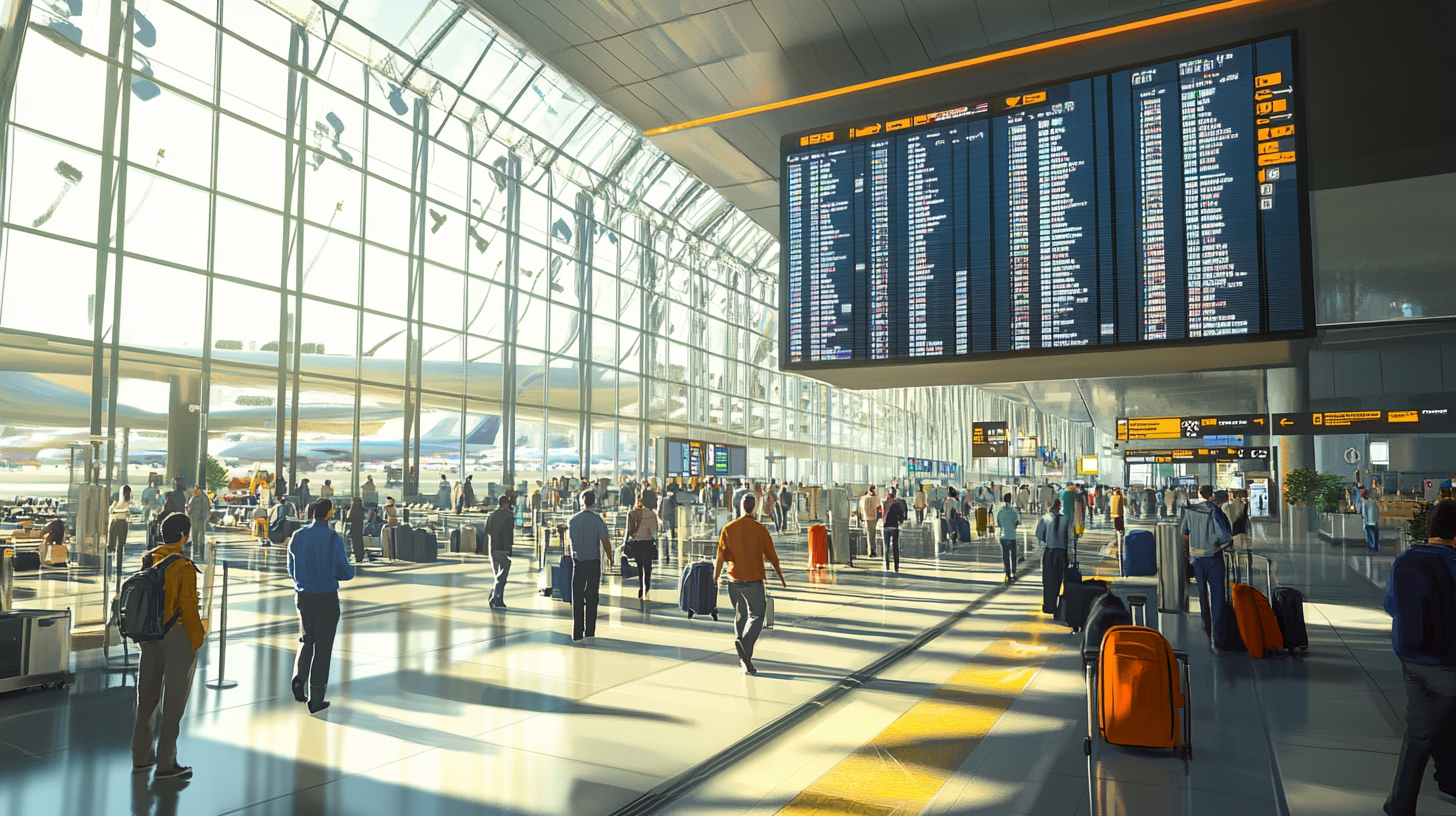
Shared experiences, including cultural events and festivals, continue to be significant travel motivators. The phenomenon of events like Taylor Swift’s global tour demonstrates how such occasions can influence travel trends, particularly among younger generations. These events not only offer entertainment but also foster a sense of community among attendees from around the world. Read more about the Impact of Global Concert Tours on Travel Trends.
Increased demand for these experiences is expected to make travel more expensive, especially regarding lodging in event-hosting cities. Brian Kelly notes that despite stable airfares initially, overall travel costs are on the rise due to higher demand and inflation. Planning ahead is essential to secure accommodations and flights at reasonable prices. Booking well in advance or considering alternative lodging options like vacation rentals or staying in nearby towns can help mitigate costs. Here are some additional Tips for Booking Accommodation During High-Demand Events.
When seeking out these shared experiences, consider alternative destinations or dates to avoid overcrowding and overtourism. This approach not only enhances your personal experience by avoiding the masses but also contributes to more sustainable tourism practices. For instance, attending regional festivals or local cultural events can provide a more authentic experience while supporting local communities. Read more on Exploring Off-the-Beaten-Path Festivals Around the World.
Moreover, be mindful of climate change and its impact on travel regulations and destination availability. Some regions may implement new policies to protect the environment, which could affect accessibility or require additional planning. Being flexible and informed allows you to adapt your travel plans accordingly, ensuring you don’t miss out on enriching experiences due to unforeseen environmental factors. Learn more on Adapting Travel Plans in Response to Climate Change.
6. Stay Updated on Airline Mergers and Industry Changes

The aviation industry is no stranger to mergers and acquisitions, which can significantly affect frequent flyers. The finalization of the merger between Korean Air and Asiana Airlines is set to reshape South Korea’s aviation landscape. With approval from the U.S. Department of Justice and strategic remedies like leasing aircraft to Air Premia, the merger aims to strengthen competition and enhance services.
This consolidation could result in improved route options, better services, and a more robust frequent flyer program. If you frequently travel to or through South Korea, staying informed about these developments can help you take advantage of new opportunities post-merger. Find out What the Korean Air and Asiana Merger Means for Travelers.
Similarly, the merger between Alaska Airlines and Hawaiian Airlines will require adjustments from frequent flyers. The unification of their frequent flyer programs means new earning and redemption possibilities, as well as matched elite statuses. Keep an eye out for detailed program updates expected by mid-2025 to understand how these changes can benefit your travel plans. Be proactive in transferring miles or adjusting your bookings to maximize benefits from the merged program. Learn more on Navigating the Alaska and Hawaiian Airlines Program Integration.
Industry changes also extend to airline fees and policies. With Air Canada introducing charges for carry-on bags and seat changes for basic economy travelers, it’s essential to read the fine print when booking flights. These additional fees can add up quickly, affecting your overall travel budget. Being aware of such fees can help you budget appropriately and avoid unexpected expenses at the airport. Check out Understanding New Airline Fees and How to Avoid Them.
7. Make the Most of New Year Travel Opportunities

While spending New Year’s Eve on a plane might not be eventful in terms of airline-organized celebrations, it offers a unique experience. Crossing time zones, particularly over the International Date Line, can allow travelers to celebrate the New Year multiple times in one journey.
Though airlines typically do not plan special events, the novelty of welcoming the New Year at 30,000 feet can be a memorable start to 2025. Sharing this experience with fellow passengers can create a sense of camaraderie and add an unexpected highlight to your trip. Read more on Experiencing New Year’s Eve While Flying Across Time Zones.
For those who prefer to stay grounded during the holidays, the slow travel days around New Year’s Eve are an excellent opportunity to find less crowded flights and airports. With most people settled at their destinations, you can enjoy a more relaxed travel experience. Additionally, airfare prices may be lower during these periods, offering cost savings for the budget-conscious traveler. Learn more about the Advantages of Traveling on Off-Peak Holiday Dates.
Looking ahead, consider planning trips to destinations that offer unique New Year’s celebrations or cultural festivities in early 2025. Cities like Sydney, Rio de Janeiro, and Edinburgh are renowned for their spectacular New Year’s events. Engaging in local traditions can enrich your travel experience and provide insights into different cultures. Remember to book accommodations and event tickets well in advance to avoid sold-out situations. Here are even more Top Destinations for Unique New Year’s Celebrations.
Regardless of how you choose to spend the New Year, make it a point to plan ahead. Use tools and resources to organize your travel documents, itineraries, and bookings efficiently. Apps like TripIt or Google Trips can synchronize your travel details, providing easy access and updates. This proactive approach ensures a smooth start to your travel journeys in 2025. Check out these Best Travel Planning Apps for a Seamless Journey.
Final Thoughts
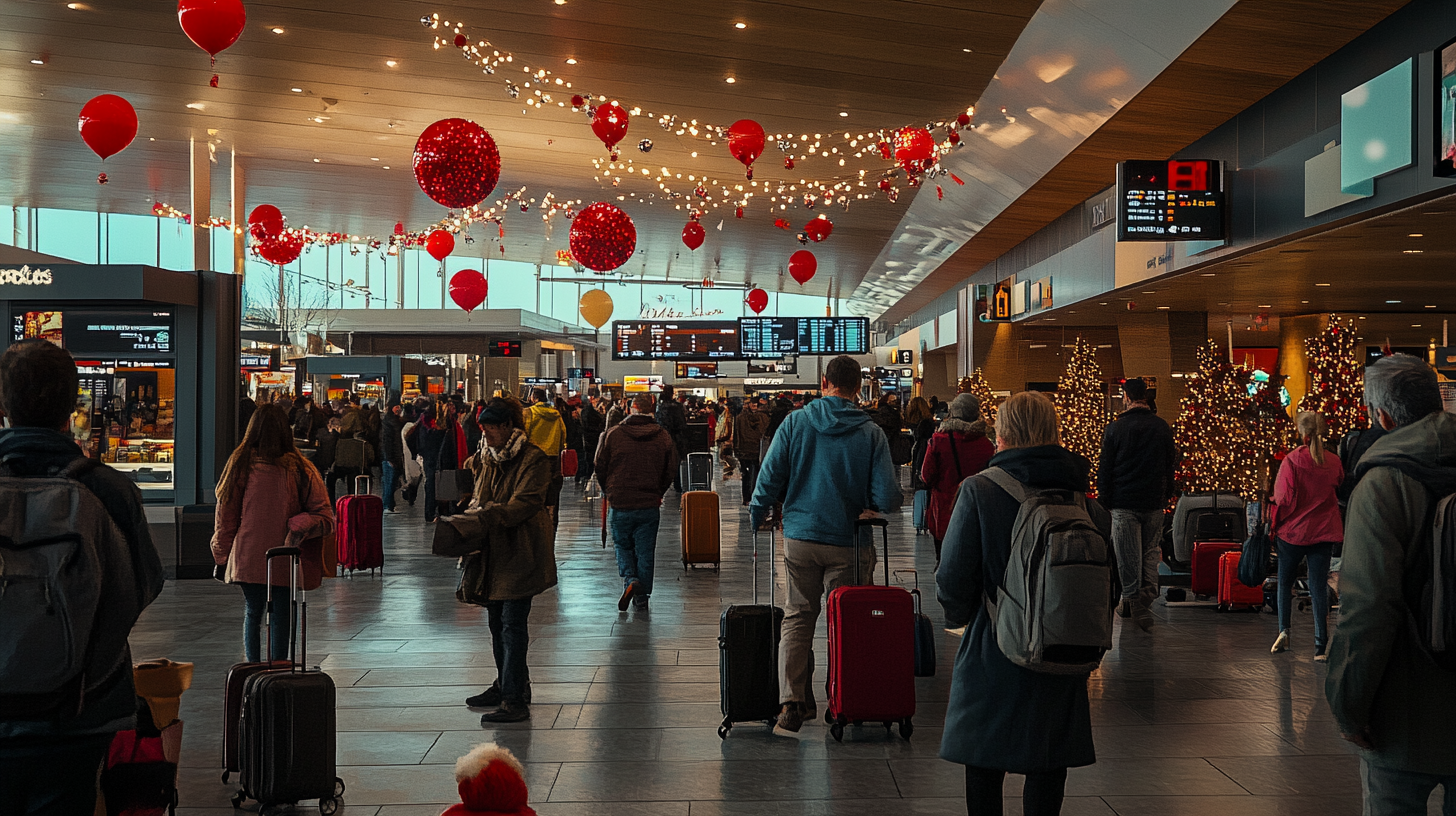
As 2025 unfolds with numerous changes in the travel industry, staying informed and adaptable is essential for frequent flyers. By re-evaluating your loyalty programs, embracing sustainable travel, leveraging credit card rewards, and planning for shared experiences, you can navigate the evolving landscape confidently.
Keep abreast of industry mergers and regulatory changes to maximize your travel benefits. With thoughtful planning and strategic resolutions, 2025 can be your most rewarding travel year yet. Check out this Comprehensive Guide to Making the Most of Air Travel in 2025 for even more insights.
For an in-depth look at how these changes affect you and to stay updated with professional opinions, follow us back to BoardingArea. Where you’ll find expertly crafted strategies and insights to guide you through 2025’s travel challenges and opportunities.
Happy New Year & Safe Travels!

